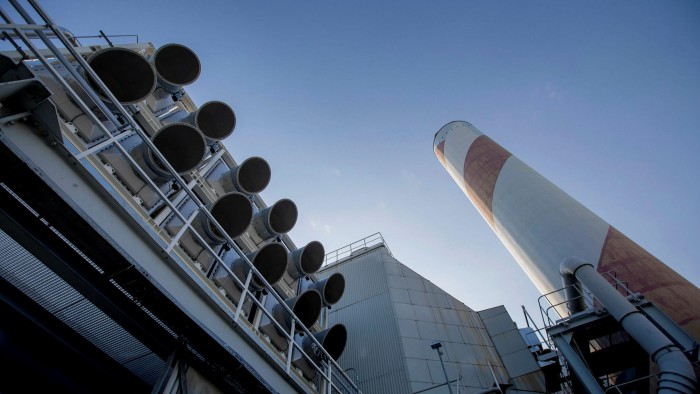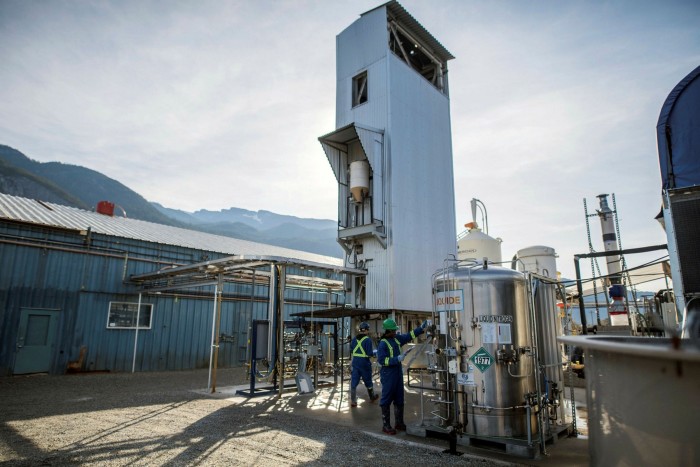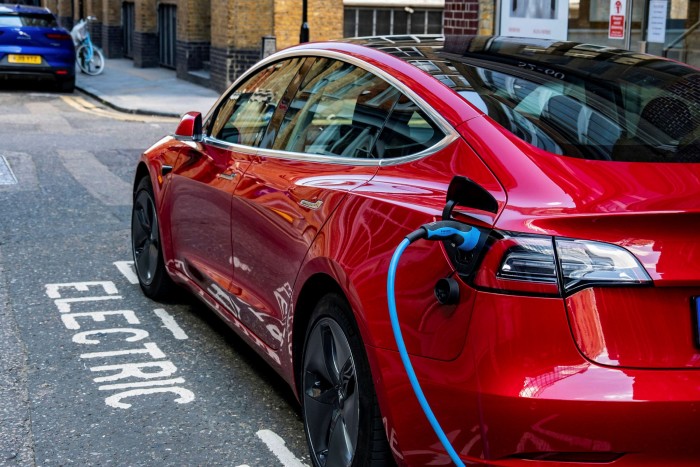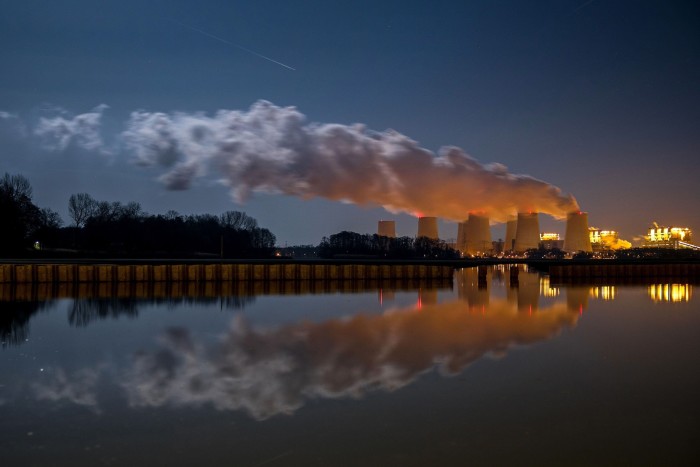Carbon capture eyes renewed backing despite past failures

Simply sign up to the Energy sector myFT Digest -- delivered directly to your inbox.
There has long been a simple proposal for dealing with the carbon that causes climate problems: send it back underground. But carbon capture and storage (CCS) — whereby CO2 emissions from industrial and power plants are pumped into geological reservoirs, such as disused oilfields — has failed to take off, marred by a history of costly failures.
Despite this, however, the technology is still being touted in blueprints to achieve goals for net-zero carbon emissions — including those of oil majors such as Shell and BP. Norway is revisiting CCS a decade after its first attempt was abandoned with cost overruns, while Japan has included CCS in its 2050 net-zero climate plans.
Renewed backing for CCS comes even though environmental groups continue to criticise it — seeing it as a costly distraction that prolongs the use of fossil fuels at the expense of green technologies. “CCS is a technology that will be useful at the margins for a few specific uses, not a central tenet of the shift to net zero, which is how it’s being promoted,” says Mike Childs, head of research at Friends of the Earth, an environmental group.
But there is scope for the technology to grow. Currently, only 40m tonnes a year of CO2 is stored globally via CCS — a fraction of the world’s total annual emissions of 36bn tonnes. The International Energy Agency says CCS must play a “major role” in a shift to net-zero emissions, while the Global CCS Institute, a think-tank that promotes the technology, argues: “The urgency of getting to net-zero by 2050 means we have to deploy all the solutions we have.”

David Knipe, a partner at consultancy Oliver Wyman and a former BP executive, adds: “People need oil and gas for many decades to come, but the future viability of it in a net-zero context requires CCS at scale.”
Proposals for 30 CCS projects, located mostly in the US and Europe, have been announced since 2017, the IEA said in September. Sixteen of these, representing $27bn of investment, are “at advanced stages of planning”.
More stories from this report
Energy grids of the future steeled for big changes
Plastics-to-oil recyclers face a double struggle
Gas prospects lose steam as low-carbon shift gathers pace
Low-income countries play carbon leapfrog
Carbon price is missing from Biden’s overhaul of climate policy
Positive outlook for batteries in Australia renewables shift
This revival of CCS is in part the result of a shift in understanding about how the technology can complement other moves to tackle climate change. Nowadays, the premise that a single power plant would send its CO2 to a disused oilfield via a dedicated pipeline is regarded as inefficient.
“That business model of one project to one storage has not been successful,” says Guloren Turan, advocacy manager at the Global CCS Institute. “Now, we’re looking at it as a regional industrial decarbonisation approach.”
That means building a network of pipelines to serve an area with many industrial emitters of CO2, to allow economies of scale. It also means installing CCS in the high-polluting industrial plants of steel, cement and chemicals manufacturers, instead of in fossil fuel-fired power stations.
There is also a need to prove the technology can work and be economically viable at scale. Knipe estimates that, for polluters to choose CCS instead of releasing emissions into the atmosphere, the price put on carbon by authorities would need to be at least $50 a tonne. “If it was double that, you’d release a lot more potential,” he says. The EU’s carbon price is €46 per tonne.
“If you’re making investments of shareholders’ money in the energy space, this would [currently] be bottom ranking in your return profile,” admits Knipe. Changing that requires government incentives, he believes.
An example of this could soon emerge in Humberside, in northern England, where a consortium hopes to create a net-zero cluster of companies using CCS and hydrogen power. The goal is to build a dual network of carbon and hydrogen pipelines that would serve electrical and industrial plants in the area, connected to a depleted oilfield in the North Sea.

“We can build offshore wind farms and power our homes and businesses with that, and we can drive around in electric cars, but what are we going to do to decarbonise industry?” says Martin Cook, business development director at National Grid, the utility that hopes to build the Humberside pipelines. “We have to use carbon capture. That’s become a realisation in the last couple of years.”
He says the project will offer heavy industries a way to survive in a country with a net-zero goal, since “companies will be subject to carbon taxes, so the equation here is to build solutions that will be more economic than paying carbon taxes”.
National Grid and others are in negotiations with the UK government over the subsidies and regulations that would produce “investable business models”. Assuming what it calls a “sensible” outcome in the first half of next year, National Grid then intends to raise money and start construction with the goal of sequestering the first emissions by the mid-2020s. “They’re not trivial sums . . . we’d be looking to invest billions [of pounds] . . . but we’re capturing millions and millions of tonnes of CO2 in the process,” Cook says.
Twice weekly newsletter

Energy is the world’s indispensable business and Energy Source is its newsletter. Every Tuesday and Thursday, direct to your inbox, Energy Source brings you essential news, forward-thinking analysis and insider intelligence. Sign up here.
This is not the first time the UK has sought to advance CCS projects. Two government subsidy bidding competitions, in 2007 and 2012, were cancelled over cost concerns. For Stuart Haszeldine, professor of CCS at Edinburgh university, this highlights the flaws of relying on subsidies to pay for CCS.
Rather than adopting a carbon tax, Haszeldine says more progress would be made if oil and gas companies were forced to arrange and pay for CCS for the emissions resulting when the fuels they produce are used. “The routine costs need to go back to the people who are causing the problem: the producer who pulls it out of the ground,” he says.
But Childs at Friends of the Earth thinks there are other priorities. He says the UK should prioritise converting the steel industry to run on hydrogen, building floating offshore wind farms and improving housing energy efficiency. “On a list of priorities for spending money, CCS would be at the bottom,” he says.
Climate Capital

Where climate change meets business, markets and politics. Explore the FT’s coverage here
Comments